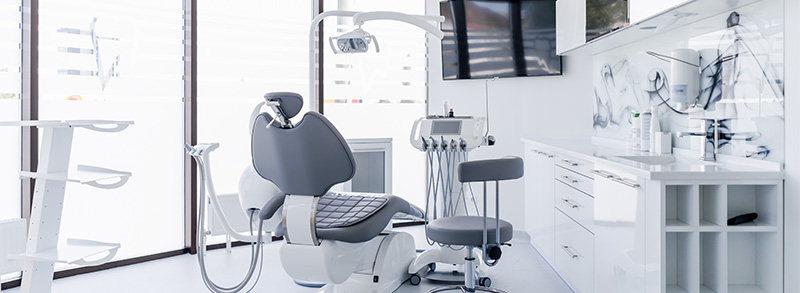Reimagining the Hygiene Department: The Untapped Key to Transforming Healthcare
Learn More!
- Request a Demo
Learn More!


In the pursuit of innovation and improved outcomes, many healthcare organizations turn to new technologies, treatments, or service lines. However, a powerful and often overlooked opportunity for transformation lies within the hygiene department—a foundational part of preventive care that can profoundly affect patient outcomes, team morale, and overall operational success.
This article explores how reshaping the hygiene department can revitalize a practice or health system, drawing from decades of experience and real-world insights. Whether your organization faces staff turnover, stagnant performance, or misaligned departments, this comprehensive approach to hygiene offers clear and achievable pathways for growth.
While hygiene teams have traditionally been seen as supportive, they are uniquely positioned to serve as leaders in preventive care. The hygiene department plays a critical role in early detection, patient education, and long-term health maintenance. These functions are essential in a healthcare environment increasingly focused on proactive care, outcomes-based models, and patient engagement.
Elevating the hygiene department requires a shift in mindset: from seeing it as a routine service to recognizing it as a core driver of clinical success and patient loyalty.

Several industry-wide factors make the present moment ideal for investing in hygiene:
Greater public health awareness: Following global health events, patients are more conscious of preventive care and early detection.
Technology integration: Tools for diagnostics, monitoring, and communication are more advanced and accessible than ever before.
Workforce challenges: High turnover has impacted nearly all healthcare roles. Redefining and investing in hygiene can increase job satisfaction and retention.
Value-based care models: These emphasize preventive services and patient outcomes, areas where hygiene teams can excel.
When preventive teams are aligned with these emerging trends, organizations can deliver better care while improving efficiency and sustainability.
Despite its importance, the hygiene department is often underutilized due to several systemic issues:
Lack of role clarity: Hygiene professionals may operate without clearly defined expectations or goals.
Fragmented communication:
Infrequent training: Limited investment in continuing education prevents teams from evolving with industry standards.
Outdated protocols: Legacy systems and habits can prevent growth and hinder innovation.
These problems are not due to individual failings, but structural challenges that can be addressed through thoughtful leadership and clear strategy.

Any successful transformation must begin with a solid cultural foundation. An empowered hygiene team starts with a culture of respect, shared goals, and open communication. Healing existing friction between departments, clarifying roles, and creating mutual accountability fosters an environment of trust and collaboration.
Some foundational communication tools include:
Structured team huddles: Weekly or biweekly meetings help align priorities, resolve issues, and maintain transparency.
One-on-one feedback sessions: These strengthen manager-employee relationships and create a space for growth discussions.
Clear goal-setting frameworks: Teams thrive when expectations are documented, measurable, and linked to overall performance.
By investing in internal dialogue, healthcare organizations can prevent silos and ensure everyone feels connected to the mission.
Hygiene teams perform a wide variety of tasks—from clinical procedures to educating patients and managing follow-ups. However, without a clearly defined scope of responsibilities, inconsistencies emerge and performance may suffer.
To optimize team performance, organizations should clearly outline:
Clinical duties: Screenings, assessments, risk evaluations, and chart documentation
Educational responsibilities: Explaining treatment plans, preventive care, and at-home routines
Metrics and KPIs: Follow-up rates, case acceptance, and patient retention statistics
With transparent expectations and performance tracking, hygiene professionals can operate with purpose, efficiency, and accountability.
Modern healthcare offers a wide range of technologies designed to enhance care delivery. However, indiscriminate adoption can burden teams and complicate workflows. For hygiene departments, technology should enhance—not replace—human expertise and connection.
Best practices for integrating technology include:
Needs-based adoption: Select tools that solve specific challenges or improve clearly identified metrics.
Phased rollouts: Implement new systems gradually, allowing time for training and adjustment.
Continuous feedback: Encourage staff to evaluate tools regularly and provide input for improvement.
Used properly, technology can support more consistent care, streamline administrative tasks, and help professionals spend more time where it matters most—with the patient.
Retention is one of the most urgent concerns in healthcare today. While some turnover is unavoidable, much of it stems from preventable causes—lack of recognition, unclear growth paths, and burnout. Redesigning the hygiene department offers a chance to reengage professionals and provide long-term career satisfaction.
Strategies to reduce turnover include:
Ongoing professional development: Courses, certifications, and mentorship opportunities help staff grow clinically and personally.
Recognition programs: Celebrating achievements and sharing wins during meetings reinforces morale and motivation.
Career path clarity: Whether advancing into leadership, education, or specialized care, having visible progression opportunities keeps people invested.
Retention is not just about compensation—it’s about culture, purpose, and respect.
Transforming the hygiene department requires consistent tracking of performance and progress. This involves identifying key performance indicators (KPIs) that reflect clinical quality, efficiency, and patient engagement.
Useful hygiene-related metrics may include:
Preventive service utilization
Treatment acceptance rates
Per-patient production or output
Hygiene-related contribution to practice revenue
By monitoring these data points and comparing them over time, leaders can identify opportunities for improvement and celebrate areas of success.
No team transformation can happen without leadership buy-in. Managers and administrators must actively champion the hygiene department’s success, provide resources, and remain engaged in its development.
Effective leadership practices include:
Transparent goal-setting aligned with organizational objectives
Routine evaluation and adjustment of workflows and KPIs
Regular check-ins with team members to assess morale and progress
Encouraging collaboration between hygiene professionals and other departments
Leaders should not only manage but mentor—empowering teams to take ownership of their work and growth.

Reimagining the hygiene department isn’t an overnight project—it’s an intentional, phased approach that balances culture, systems, and innovation. The following roadmap can help guide healthcare organizations through the process:
Assess the current environment
Conduct an internal audit to evaluate team structure, workflows, communication habits, and performance.
Create a clear vision and plan
Outline what a thriving hygiene department looks like in your organization—who’s involved, what they do, and what success means.
Develop standardized processes
Document protocols, responsibilities, and goals. Make them easy to understand and easy to follow.
Support with tools and training
Offer updated equipment, patient communication systems, and professional education to enable better care delivery.
Foster collaboration
Encourage cross-department initiatives and shared accountability for patient outcomes.
Celebrate and refine
Track progress, celebrate achievements, and adjust strategies as your team grows and evolves.
Ultimately, a high-functioning hygiene department reflects a broader cultural commitment to prevention. In today’s healthcare climate, the shift from reactive treatment to proactive health management is no longer optional—it’s essential.
This shift requires:
Patient education as a central part of every visit
Emphasis on risk reduction through screenings, cleanings, and lifestyle coaching
Strong patient relationships built on trust, follow-through, and communication
A united team that sees preventive care as a shared mission
Preventive health is not the work of one department—it’s a philosophy that must permeate the entire organization. However, when the hygiene team is empowered to lead that mission, the results can be transformative.
Transforming the hygiene department is more than an operational tweak—it’s a strategic investment in the health of your team, your patients, and your organization as a whole.
By focusing on culture, clarity, communication, and innovation, healthcare leaders can revitalize preventive services and create a ripple effect that touches every part of the patient experience.
Rather than searching for the next trendy treatment or tool, many organizations would benefit most from looking inward—at the people already on their team, the systems already in place, and the untapped potential waiting to be activated through purpose, support,
It's easy to get started! Our quick, 15-minute demo is all it takes to learn about how DoctorsInternet.com can help you increase your online visibility. Through our advanced marketing techniques and local targeting, we'll help you expand your practice's reach and build your reputation. Additionally, your dedicated marketing representative will be your direct contact for all of your marketing needs.
Please complete the form to request a demo, and let us know if you have any specific questions in advance. A sales representative will reach out to you shortly.